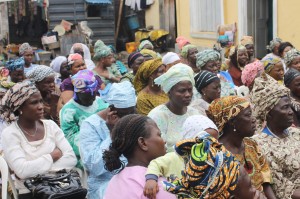
Violence against women and girls is a global scourge witnessed in every clime across cultures and religions. Deeply rooted in long-standing stereotypes and patriarchal structures that have institutionalized gender constructs, women are regarded lower than men, and as such, socialized to assume a subordinate role vis-à-vis men within the family, and within the community. Because patriarchal ideology arrogates power and dominance to the male, it likewise, rationalizes social attitudes and cultural practices that encourage men to subject women to violence.
Violence as explained by Johan Galtung could be direct (physical), structural (in form of social injustice) and cultural violence. The latter–cultural violence– refers to those aspects of culture that can be used to legitimize violence in its direct or structural form. This form of violence is commonplace in domestic situations within society.
Characteristically reflecting the diversity of violence that women face, Lagos State has in the last one year, recorded about 4,000 cases of gender-based violence ranging from rape, child abuse, sexual assault and sexual abuse to defilement, divorce and other matrimonial issues. The above data was collated by the Domestic and Sexual Violence Response Team (DSVRT) in partnership with the Lagos State Government. This figure, however, represents the reported cases, which means that unreported cases may not have been captured.
The grim statistics in Lagos is not so different from other places across Nigeria. Bazza Iza Hadiza in (2009) reported that in Guma and Makurdi Local Government Areas of Benue State, as well as in Ebonyi and Akwa-Ibom States in the South, domestic violence is a common practice accepted by men as normal in order to keep the women under control. Violence is also widely perceived as a sign of authority over women in marriage. This observation probably inspired Diddy Antai to argue that the justification of wife beating by a husband/partner is reflective of the cultural context in which the women reside. Antai further opines that traditional societal norms encourage men to inflict physical punishment on their wives/partners, with the women generally accepting such violent acts against them.
It is concerning that violence against women persists despite the laws that abound, designed to bring them to an end. A number of legislations–such as the Criminal Code Act, the Penal Code, the Marriage Act, Matrimonial Causes Act, the Violence against Persons Prohibition Act (VAPP) 2015, as well as several international protocols and treaties like the Convention on the Elimination of All Forms of Discrimination against Women (CEDAW), the Protocol to the African Charter on Human and Peoples’ Rights on the Rights of Women in Africa– are replete with legal protections for female life, integrity, security, peace, dignity, education and training, economic and social welfare and a host of other rights.
The pertinent questions then begging for answers are: does the plethora of constitutional, legislative and human rights guarantees at the state, national and international levels, really confer enforceable legal protections to women, particularly against gender-based violence? To what extent have these instruments combated gendered inequalities and shifted the social norms that underpin violence against women and girls? What needs to be done to bridge this gap? These, and many more, we are determined to find out.




















